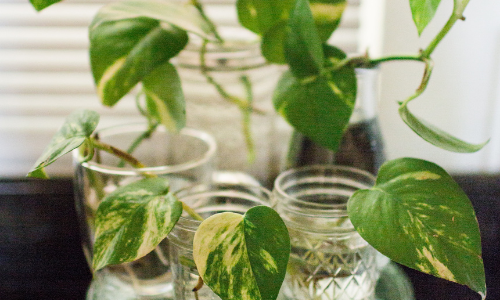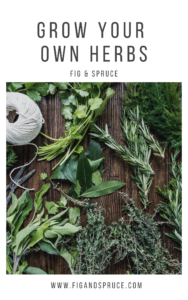A common question beginners have when propagating plants is how to transfer them from water to soil.
We’re covering how you can use leca for propagation for exactly this step.
The transition from water to soil can be difficult for propagated cuttings, and you risk shocking the plant in the process.
In this article we’re covering how to handle this and avoid this common pitfall by transitioning a propagated plant from water to leca instead of traditional potting soil.
Table of Contents
What is Leca?
Leca stands for lightweight expanded clay aggregate. Essentially, leca is a growing medium made up of clay balls that you use either in place or in addition to soil.
Leca is a great growing medium for a few reasons. Leca essentially helps regulate how your plant absorbs water. The clay balls will absorb water as you water your plant. This allows the plant’s roots to absorb water as the plant needs it – essentially it drinks whenever its thirsty.
This helps regulate how much water the plant gets, and helps prevent overwatering. Overwatering can be a common pitfall for new gardeners, and leca helps avoid this.
Another reason we love leca as a growing medium is that it is reusable. While potting soil is generally not recommended to be reused season after season, leca can be reused time and time again. This makes it sustainable and cost effective in the long run.
If you’re considering leca and want to read more, this article does a deeper dive into the pro’s and con’s of using leca as a growing medium.
Where to Purchase Leca
For the most convenience, we recommend purchasing leca off of Amazon. We love this brand, but there are multiple options for you to pick from there and you can have it on your doorstep within 2 days.

If you’re interested in exploring all options for leca, check out this article for more info.
Why Use Leca for Propagation?
When propagating plants, it can be tricky to transition your plant from water to soil.
One method is to layer perlite, or coco coir at the bottom of your planter and then place a light layer of soil on top.
This method will yield success some of the time, but sometimes the transition from water to soil can shock the plant.
Another method of transitioning your plant is to move it to leca. This method can be less shocking for a plant because of the lack of soil. Leca allows your plant to continue to absorb water at its own rate without sitting in just water alone.
You can continue to grow your plant in leca long term just as you would in soil.
Steps to Using Leca for Propagation
The steps for using leca for propagated plants is fairly simple and straight forward. Lets go over the steps to using leca for propagation.
Step 1 – Propagating the plant
To propagate the plant cutting of your choice, the general process is to take your cutting and place it in water for an extended period of time. During this time your plant will grow roots, and once the plants have reached 1.5″-2 inches long its ready to move to Leca.
This process can be lengthy, sometimes taking months for plants roots to grow to the required length. Sometimes attempting to propagate a plant can even fail and result in no root growth.
If you are interested in speeding up the process and increasing your chance of success, you can try using a rooting hormone. Rooting hormones are solutions that you place on the cut end of your plant cutting to help stimulate root growth.
Our top pick for rooting hormones is Clonex Rooting Gel, which you can purchase on Amazon. Its beginner friendly and affordable, and will increase your chance of success when propagating.

Clonex is our top pick, however if you want to read a full comparison and reviews on different rooting hormone options, check out this article for more info.
Step 2 – Wash the Leca
Prior to use, all leca should be washed. It will have a lot of dust particles that you want to remove with water prior to placing your propagated plant in leca.
Step 3 – Place plant cutting in Leca
Once the leca is prepped, fill your planter 80% of the way with leca. Then, take your plant cutting and place the roots in the planter.
Carefully fill the planter around your plant cutting so the roots are covered.
Step 4 – Water Thoroughly
Water thoroughly to ensure the leca can absorb the water.
If you’re interested in adding fertilizer, we suggest adding a liquid fertilizer to the water to allow your plant to absorb it.
One example is the general hydroponics set from floragro. This liquid solution is easy to use and will give your plants the necessary nutrients.


